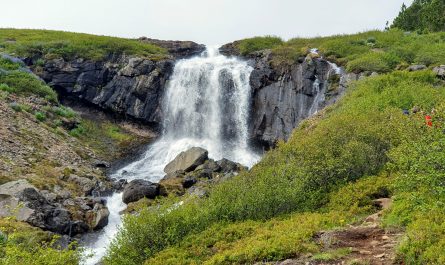The road network in Iceland features a wide variety of scenarios. If you want to drive on roads all over the country, you should be ready for a wide range of weather and road conditions. But don’t worry too much, because if all goes according to plan, an incredible world is waiting for those who are brave enough to explore it.
You shouldn’t have too many concerns if you want to drive around the ring road throughout the spring, summer, or fall seasons. Paving has been done on the ring road, and there is typically very little snowfall between May and September. Nevertheless, one should always be prepared for the unexpected because there have been years when snow fell in July. Watch out for things like bridges with only one lane or strange shapes, roads that are too narrow or too steep, and oncoming vehicles on roads that are too narrow.
However, winter driving conditions on the Ring Road might make for a more challenging experience. As there are many different kinds of weather and driving conditions that can happen, it is best to be well-prepared and ready to deal with difficult situations if they arise. Because the famous snowdrifts in Iceland can make it hard to see, drivers must be very careful when driving between road markers. It is possible to feel disoriented when the only thing you can see immediately above you is the clear blue sky. Driving in the ice and snow can also be a very difficult experience. The videos that follow demonstrates driving in these situations.
If you want to drive around Iceland’s ring road during the winter, the first thing you need to do is familiarize yourself with the information that can be found on the website of the Icelandic Road and Coastal Administration. The website includes details on a map as well as recent announcements. On the map, the roads are color-coded according to the conditions, and it also shows if there is a closure in progress and if snow removal is being worked on, in addition to other essential information. In addition to that, it specifies the duration of time that the Icelandic Road and Coastal Administration keeps the roads open. It is in your best interest to schedule your trip within that period.
Checking the weather forecast thoroughly is required before getting behind the wheel. You may view weather forecasts that are extremely accurate for the next one to two days ahead of time on the website of the Icelandic Met Office. You should also be aware of the terrain you are travelling over, since mountainous areas can have strong winds. When driving on wet ice, even a small amount of wind can make it very hard to steer and keep control of the car. The road that goes beneath the mountain Esju near Reykjavik and the road that goes under the mountain Hafnarfjall near Borgarnes are two examples.
In the highlands, during the winter months, the roads are typically closed. According to the website of the Icelandic Road and Coastal Administration, they open in the spring. This information can be found there. When travelling through the highlands, it is essential to be in a vehicle with decent ground clearance, preferably one with four-wheel drive, and it is even preferable to be in a jeep. It is difficult to drive over rivers that can rise significantly as a result of rain or the spring thaw, and it is important to be aware of what you are doing in these situations. Every year, people who get stuck in the middle of a river need to be rescued.
The main roads in the Westfjords are kept open most of the year; nevertheless, it is not uncommon for mountain roads to be closed during the winter months as severe weather moves through the region. Because not all mountain routes are designed for winter travel, you will need to make careful preparations for the path that you take. As was already said, it’s important to look at the information about traffic conditions from the Icelandic Road and Coastal Administration and the weather predictions from the Icelandic Met Office. This recommendation is applicable to the entire country.
After that, we will discuss the response to the question. Driving in Iceland is not any more dangerous than driving anywhere else, provided that you stick to the main tourist attractions and travel during the summer months. Driving in Iceland may be extremely hazardous, especially on mountain roads, gravel roads, roads that are too narrow for two vehicles, or roads that are in terrible conditions. On the other hand, the risk can be greatly reduced if you plan well and are careful. When driving on Iceland’s roads, take your time and don’t be in a hurry.


